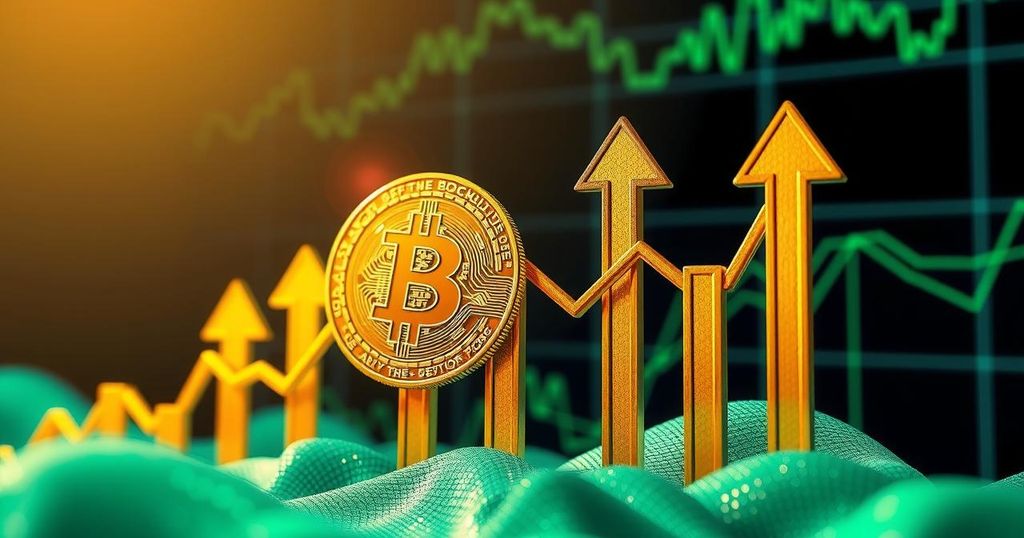Bitcoin Reaches Highest Levels Since February Amid Trade Deal Hopes
Bitcoin surged to nearly $99,000, spurred by President Trump’s hints about a potential UK trade deal. The Federal Reserve kept interest rates steady, indicating a stable economic backdrop despite ongoing uncertainties. Analysts warn that while optimism is high, market sentiment could be outpacing fundamentals, especially amid ongoing trade talks with China.
Bitcoin climbed to about $99,000 on Thursday—its highest level since February. This surge comes on the heels of President Trump’s remarks regarding a possible trade deal with the UK, sparking traders’ hopes that the world’s leading cryptocurrency could soon break the $100,000 mark. CoinGecko data shows a 2.6% rise, following a slight retreat from earlier highs of over $94,000.
Trump took to Truth Social, teasing a “MAJOR TRADE DEAL” with the UK and announcing a White House press conference to provide more details. According to The New York Times, the potential agreement seeks to alleviate economic tensions, particularly after months of tariff challenges under Trump’s “Liberation Day” agenda. The UK has faced a 10% tariff and 25% duties on steel and aluminum imports.
UK officials have been lobbying for reductions in these tariffs, and this prospective deal may lead to concessions on the UK’s digital services tax while reducing duties on American agricultural goods. The cryptocurrency rally coincided with a cautious Federal Reserve announcement that kept rates steady at 4.25% to 4.50%. This resulted in a modest uptick in equities, with the S&P 500 and Dow Jones climbing just under 1%.
Fed Chair Jerome Powell recognised the looming “heightened uncertainty” but maintained a positive outlook on the economy’s sturdiness. Market analysts, like Aurelie Barthere from Nansen, pointed out that recent statements by Trump and Treasury Secretary Scott Bessent suggested that fears of aggressive tariff escalations might be easing.
Traders appear to see Trump’s administration as a safety net for risks, with Barthere noting a belief in a “Trump put” supporting equities and even crypto. That said, she warned that this current rally lacks solid validation and that ongoing trade negotiations with China could affect the upward trend.
Nansen’s internal forecast suggests a 55% chance that Bitcoin might hit new all-time highs, yet Barthere remarked that the potential for additional upside has diminished. Marcin Kazmierczak, COO and co-founder of RedStone, highlighted that Bitcoin’s correlation with the S&P 500 has been volatile, swinging between -0.2 and 0.4 over the past year.
This fluctuation indicates that while Bitcoin has acted as a diversifier, it does not consistently function as a safe haven during market downturns. Additionally, Nansen’s recent report cautioned that trading sentiment might be ahead of market fundamentals.
The report indicated a concerning dip in the equity risk premium to below 3%, signalling that traders could be underestimating potential risks in light of weak consumption data, stalled trade negotiations with China, and persistently rising core services inflation.
As the market watches closely, the next moves of Bitcoin could hinge on developments in international trade relations and macroeconomic factors.




Post Comment